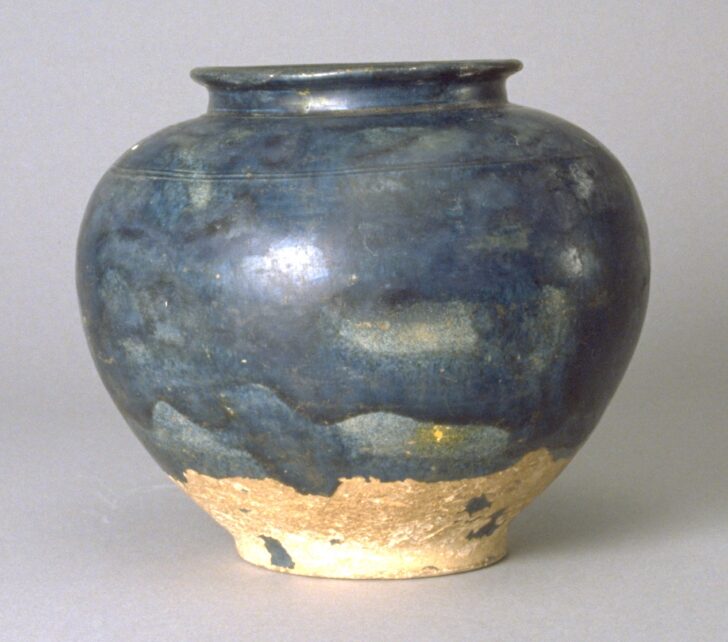Jar
Chinese

Description
Cobalt glazes, no doubt inspired by imported Persian wares, first appear in China in the Tang dynasty (618–907). After the fall of the Tang, however, access to cobalt sources dried up with the changing political climate. Cobalt would re-emerge as an important element in Chinese porcelain decoration, after trade with Central Asia and Iran was re-established by the Mongols in the thirteenth century.
During the stable and peaceful Tang Dynasty, the Silk Road brought exotic luxury goods to China, including metalwork, glass, precious stones, ivory, and textiles from Central Asian, India, and the Middle East. The bustling Tang capital of Chang’an (modern Xi’an) was a bit like the Paris and New York of today in its cosmopolitan mix of peoples, cultures, music, foods, and goods. The cobalt glaze of the handsome storage jar was inspired by imports of Persian (Iranian) glass . The experimental splashed glaze on the ewer also uses imported cobalt while the the dragon-headed handle derives from a popular Iranian metalwork motif.
(Label for UMMA Chinese Gallery Opening Rotation, March 2009)
Subject Matter:
Cobalt glazes, no doubt inspired by imported Persian wares, first appear in China in the Tang dynasty (618–907). After the fall of the Tang, however, access to cobalt sources dried up with the changing political climate. Cobalt would re-emerge as an important element in Chinese porcelain decoration, after trade with Central Asia and Iran was re-established by the Mongols in the thirteenth century.
Physical Description:
A buff stoneware globular jar, with a tapered base and wide, high shoulders, tapering to a wide, short neck with an everted rim. The work is covered in a mottled cobalt blue glaze.
Usage Rights:
If you are interested in using an image for a publication, please visit https://umma.umich.edu/request-image/ for more information and to fill out the online Image Rights and Reproductions Request Form.